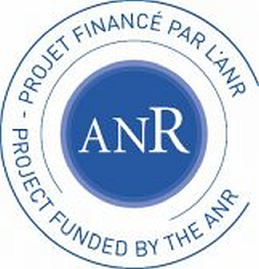Presentation
In fusion welding processes, metallic materials of dissimilar type, nature or properties are joined in order to develop a single part with new functionalities. However, during the cooling process, the solidification stage leads to the development of particular material defects inside the weld bead depending from process parameters. A thin liquid metal layer may persist between grains and dendrite arms in the coherent grain structure which endure large thermal stresses. This phenomenon promotes the development of hot cracking defects. Similarly, at the same ending solidification stage, the formation of intermetallic brittle phases is commonly observed induced by the complex nature of segregation phenomena. These specific welding defects have to be carefully monitored regarding the expected high level of reliability, mechanical strength and fatigue life intended by industries. This control is particularly evident considering the safety of welded equipment in automotive, aircraft or energy industries. The development of defects is also made worse with the recent use of advanced materials, innovative processes or complex geometries. These defects and theirs consequences are barriers to the efficiency of welding processes to meet future expectations of industries. The NEMESIS project aims to deliver a generalized approach to remove these barriers through the use of virtual materials in a collaborative partnership balanced between modelling, experimentation and valorization.
The NEMESIS project will first propose a reliable modelling of grain growth development in welding and associate defect occurrences considering the complex physical phenomena taking place during the whole fusion process. In-situ experimental observations on test benches will investigate grain growth and hot cracking mechanisms (ICB, LMGC) to analyse local criteria leading to defects development. Simultaneously grain structure and associated defects will be modelled in a multi-physics approach (ARMINES-CEMEF) based on the Cellular Automaton-Finite Element (CAFE) approach. Modelling of grain growth at the mesoscopic scale will be coupled with the resolution of the conservation equations at the macroscopic scale in a multiscale approach taking into account thermomechanical, solute and fluid flow evolutions. The CAFE tool will offer the possibility to develop realistic virtual microstructure similar to the ones observed by industries.
In addition, the current ultrasonic Non Destructive Testing (NDT) used to detect, localize and estimate welding defects will benefit from this project. Indeed the simulated microstructure and defect morphology obtained from the numerical simulation of welding will be used as input of the ultrasonic inspection simulation codes: the CIVA Software (CEA LIST) and the ATHENA Code (EDF R&D). Defect echoes will be simulated on the numerical material also considering ultrasonic interactions with grains which has large consequence on NDT performances. The effects of the weld microstructure and cracks morphology position, shape or orientation on the inspection reliability will be investigated. Influences of intermetallic phases on ultrasonic interaction will also be a point of interest. The model validation will be conducted on steel grades in industrial configurations. Thus the solidification microstructure and hot cracking formation in welded equipment will be investigated. Nuclear power plant (EDF R&D) and development of brittle phase on automotive steels strengthened with manganese (ArcelorMittal) will be considered.
Softwares modelling welding processes (TRANSWELD) and control of defects (CIVA, ATHENA) will benefit from this research and promote the outcomes of NEMESIS. This project corresponds to a significant breakthrough in the mastering and control of arc welding defects through the use of virtual materials and an undeniable technological advance in the mastery of welding processes as a response to industrial needs.

